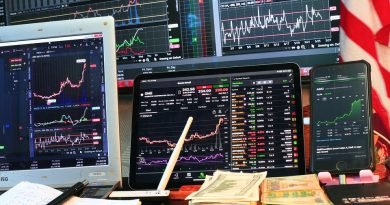Timing the Market: When Is the Best Time to Buy Stocks in a Bear Market?
Timing the Market: When Is the Best Time to Buy Stocks in a Bear Market?
The stock market is known for its volatility, and investing in such an environment can be both thrilling and nerve-wracking. During a bear market, characterized by declining stock prices and widespread pessimism among investors, many people become anxious about when the best time is to buy stocks. This begs the question – is it possible to time the market effectively during a bear market, and if so, when is the best time to buy stocks?
Understanding a Bear Market
Before we delve into the nuances of timing the market during a bear market, it is important to understand what exactly constitutes a bear market. Typically, a bear market is defined as a period in which stock prices fall by 20% or more from their recent highs. This can last for a few months to several years, and is often accompanied by negative economic indicators, such as rising unemployment rates and declining consumer confidence.
During a bear market, investor sentiment tends to be negative, leading to heightened fear and uncertainty in the market. This can result in panic selling and further declines in stock prices, creating opportunities for savvy investors to potentially scoop up discounted stocks.
The Importance of Patience and Discipline
Timing the market during a bear market requires a great deal of patience and discipline. It is important to resist the temptation to panic sell during periods of volatility, as this can lead to locking in losses and missing out on potential gains when the market eventually rebounds.
Instead, investors should focus on fundamental analysis and identify companies with strong financials and promising growth prospects. By doing so, investors can invest in quality stocks at attractive valuations, which may provide superior returns once the market recovers.
Headings
1. Recognizing the Signs of a Bear Market
– Understanding the characteristics of a bear market
– Identifying key indicators of a bear market, such as declining stock prices and negative economic data
2. The Psychology of Investing in a Bear Market
– Exploring the emotional reactions of investors during a bear market
– The importance of maintaining a long-term perspective and avoiding knee-jerk reactions
3. The Risks and Opportunities of Timing the Market
– The potential pitfalls of trying to time the market during a bear market
– The benefits of patience and discipline in navigating volatile market conditions
4. Strategies for Buying Stocks in a Bear Market
– Conducting thorough research and due diligence on potential investment opportunities
– Diversifying your portfolio to mitigate risk and capitalize on opportunities in different sectors
5. The Case for Dollar-Cost Averaging
– Utilizing a dollar-cost averaging strategy to gradually invest in the market over time
– Benefits of dollar-cost averaging in reducing the impact of market volatility and potentially maximizing returns
6. Conclusion
– Summarizing the key points of timing the market during a bear market
– Emphasizing the importance of patience, discipline, and a long-term perspective in navigating volatile market conditions
In conclusion, timing the market during a bear market can be a challenging endeavor that requires patience, discipline, and a long-term perspective. While it may be tempting to try to predict the bottom of the market and buy stocks at the lowest possible prices, it is often more prudent to focus on fundamental analysis and invest in quality companies with strong growth prospects. By following these principles and strategies, investors can potentially capitalize on opportunities in a bear market and position themselves for long-term success in the stock market.






